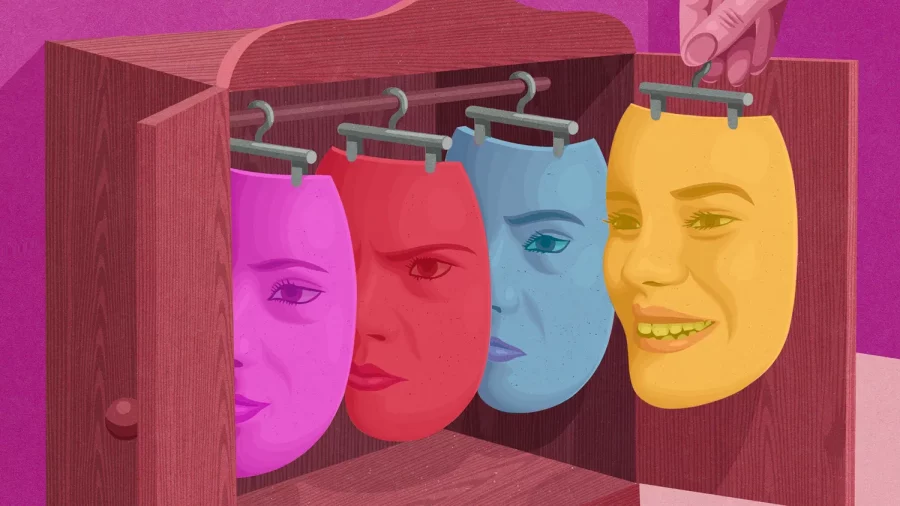In today’s digital environment, individuals can construct and present identities that extend beyond their physical selves. Platforms such as Instagram and TikTok enable users to curate digital personas, often differing from their offline realities. This process — the construction of identity in digital media — provides new avenues for creativity and self-expression while raising questions about authenticity, social influence, and the role of technology in shaping personal identity.
Opportunities in Digital Identity Construction
Digital identity construction offers significant opportunities for experimentation, creativity, and social connection. Turkle (1995) observed that early internet users explored multiple virtual personas as a way to navigate different aspects of their personality. Today, users continue this practice by curating aesthetics, developing themed content, and adopting avatars. For example, virtual influencers like Lil Miquela illustrate that digital identities can be constructed not only by individuals but also by brands and algorithms, highlighting that identity formation is sometimes co-shaped by external forces. Similarly, TikTok trends enable marginalised groups to express cultural or personal identities. Yet, algorithmic recommendations may favour performative or stereotyped representations, demonstrating that digital platforms influence how identities are perceived and performed.

Challenges and Risks
Despite these opportunities, constructing an online identity carries notable risks. Howarth (2000) explains that identity is mediated through discourse, and in digital spaces, this discourse is often shaped by likes, comments, and trending content, pressuring users toward idealised self-presentation. Extended engagement in virtual spaces can lead to reduced face-to-face interaction, potentially resulting in social isolation and emotional distance. This dual nature of freedom and constraint underscores that digital identity is not solely a personal creation but is co-constructed by structural forces such as algorithms, commercial interests, and platform norms (van Dijck, 2013).
Why It’s Still Relevant Today
Even though Turkle’s ideas began in the 1990s, her theory remains highly relevant today. The boundary between the physical and virtual self is now almost invisible. People live, work, and communicate online every day, meaning digital identity has become part of daily life. However, as van Dijck (2013) points out, the digital world is shaped by powerful systems — algorithms, social norms, and commercial interests — that influence how users perform identity. The construction of identity today is not just a personal act; it’s also shaped by the platforms that host and guide our behaviour.
Conclusion
Constructing identity in digital media presents both opportunities and challenges. It enables creativity, connection, and self-expression, but also brings pressures to conform and risks of inauthentic representation. Theories from Turkle, Howarth, and van Dijck remain highly relevant, particularly as contemporary phenomena like virtual influencers and algorithmically driven trends demonstrate that digital identity is dynamic, mediated, and continuously reshaped. Understanding these processes is essential for fostering online spaces that support authentic, diverse, and meaningful self-expression.
Reference List
Howarth, D.R., 2000. Discourse. Buckingham: Open University Press.
Turkle, S., 1995. Life on the Screen: Identity in the Age of the Internet. New York: Simon & Schuster.
van Dijck, J., 2013. The Culture of Connectivity: A Critical History of Social Media. Oxford: Oxford University Press.


You give a good example, Lil Miquela. I think she is a very famous influencer and the best example for the theme, construction of identity in a digital world. You also cite some writer saying from the books. It makes your blog become more professional. The summary is also very good. You can enrich your content that describes how the identity of Lil Miquela was built and became famous.
You have very clearly outlined the opportunities and challenges of identity construction in the digital media environment. By skillfully drawing on theories from Turkle, Howarth, and van Dijck, you bridge classic media/identity studies with contemporary practices on Instagram and TikTok, providing me with an actionable perspective while reading. I particularly appreciate your observations, such as how “we are not just using services, but are being continuously quantified,” and how “algorithms + platform norms shape identity performance.” I also believe you could delve deeper by analyzing a specific case—for instance, how Lil Miquela evolved from a virtual persona into an identity brand, and the specific mechanisms behind the algorithms, commerce, and user interactions involved. Overall, I think this piece strikes an excellent balance between theoretical frameworks and real-world examples, making it a highly enlightening work.
Hi ! I love how you describe and explain the theory of self-construction, and your TikTok example really helps me see how a person’s “self” is formed on platforms. What I liked most is your point that identity isn’t only made by individual behaviour; it’s co-shaped by the platforms we’re closely connected to.I’m curious:Are there particular platforms that have strongly influenced how you present yourself today?Is there any way we can reduce or resist that platform influence in practice?